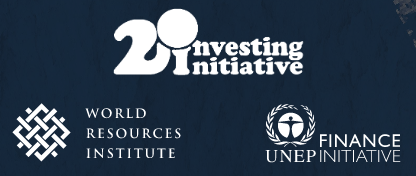The UN Environment Programme Finance Initiative (UNEP FI), the World Resources Institute (WRI), and the 2° Investing Initiative have published a report titled 'Climate Strategies and Metrics: Exploring Options for Institutional Investors,' which provides guidance for investors who wish to help facilitate low-carbon change.
 December 2015: The UN Environment Programme Finance Initiative (UNEP FI), the World Resources Institute (WRI), and the 2° Investing Initiative have published a report, titled ‘Climate Strategies and Metrics: Exploring Options for Institutional Investors,’ which provides guidance for investors who wish to help facilitate low-carbon change.
December 2015: The UN Environment Programme Finance Initiative (UNEP FI), the World Resources Institute (WRI), and the 2° Investing Initiative have published a report, titled ‘Climate Strategies and Metrics: Exploring Options for Institutional Investors,’ which provides guidance for investors who wish to help facilitate low-carbon change.
The publication: addresses investor activities for climate friendliness, such as seeking low-carbon investments and shifting existing carbon-intensive investments towards low-carbon solutions; explains the importance of investor positioning and signaling for mobilizing a “critical mass” of investors and facilitating significant climate impact in the real economy; and assesses the landscape of available metrics and their suitability for each strategy.
The report consists of five chapters, and includes an executive summary and several annexes. The first chapter discusses climate-related objectives and addresses investor action on climate change, carbon risk and climate friendliness objectives, and ways to define and measure climate friendliness of portfolios.
The second chapter on climate-friendly investor activities deals with project finance and project bonds, private equity, real assets, corporate bonds, and listed equity portfolio construction and engagement. The third chapter considers climate-friendly positioning and signaling, including investor positioning for individual actors, mobilizing a critical mass of investors, and sending a signal to policymakers and companies.
The fourth chapter reviews climate-friendly metrics, including carbon footprinting, green/brown exposure metrics and climate Environmental, Social and Governance (ESG) scores. The fifth chapter draws some conclusions and examines future developments. It provides a summary of the current state of play and discusses: ways to set climate targets by combining metrics; best practices in combining metrics; and developments to follow. [Publication: Climate Strategies and Metrics: Exploring Options for Institutional Investors] [UNEP FI Press Release]